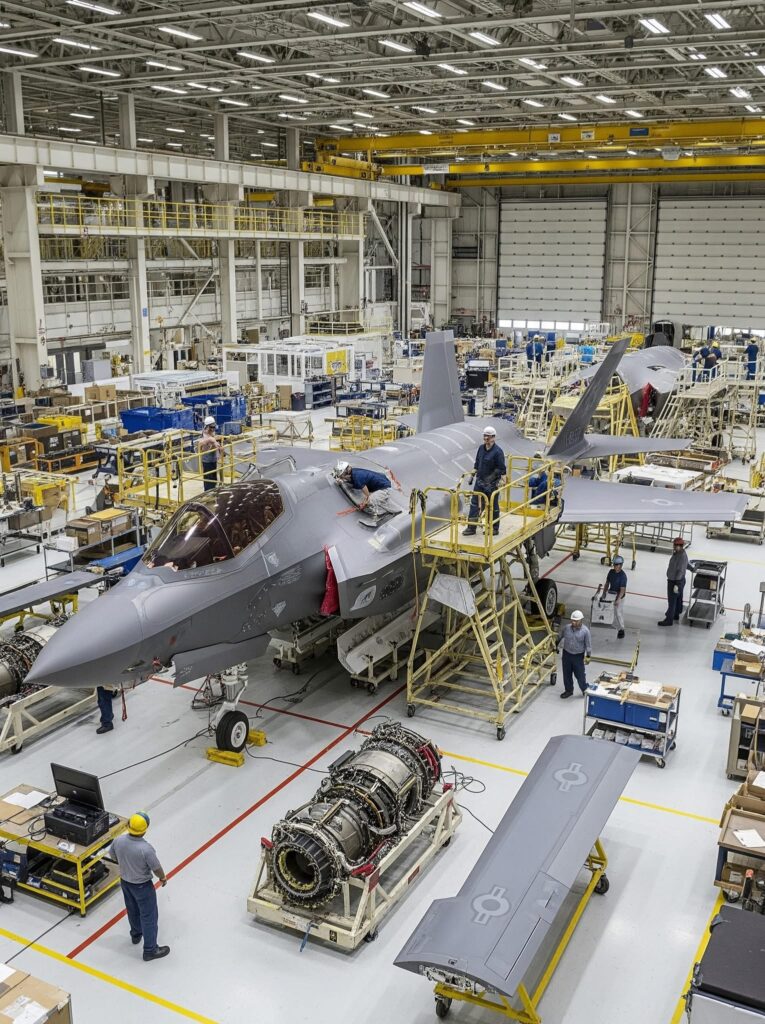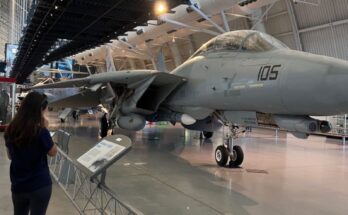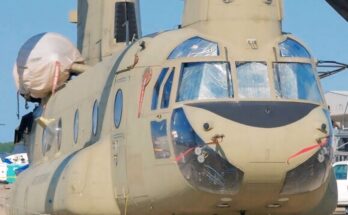
The assembly of the F-35 Lightning II represents one of the most advanced and complex processes in modern aerospace manufacturing. As a fifth-generation multirole fighter, the F-35 combines stealth design, advanced avionics, and powerful propulsion systems. Bringing these features together requires precision engineering, international collaboration, and state-of-the-art assembly techniques.
Final assembly of the F-35 takes place at Lockheed Martin’s massive production facility in Fort Worth, Texas, as well as additional assembly lines in Italy and Japan. The process is highly modular, with major components built by international partners before arriving at the assembly plant. For instance, Northrop Grumman manufactures the center fuselage, BAE Systems builds the aft fuselage and tail, and Lockheed Martin produces the forward fuselage and wings. These pieces arrive at the assembly facility, where they are joined with the aircraft’s engine, avionics, and mission systems.
A defining feature of the F-35 assembly process is its reliance on advanced automation and robotics. Unlike traditional aircraft production, which relied heavily on manual fitting and adjustment, the F-35 assembly line uses robotic drilling and laser alignment systems to ensure precision. Every component must fit seamlessly, especially because stealth performance depends on smooth surfaces and tight panel tolerances. Even the smallest gaps or misalignments could increase the aircraft’s radar signature, so assembly teams maintain incredibly strict quality standards.
Once the airframe is structurally complete, technicians install the propulsion system. The F-35 is powered by the Pratt & Whitney F135 engine, which is the most powerful fighter jet engine in the world. For the F-35B variant, a unique short takeoff and vertical landing (STOVL) system is added. This includes a shaft-driven lift fan, roll posts, and a swiveling exhaust nozzle, all of which must be integrated with precision to allow the aircraft to hover and land vertically. This stage of assembly demands careful alignment and extensive testing to guarantee safety and performance.
Following engine installation, the aircraft receives its advanced avionics and sensor systems. These include the Distributed Aperture System (DAS), the Electro-Optical Targeting System (EOTS), and the radar arrays that provide pilots with unmatched situational awareness. Integrating these systems involves connecting thousands of wires, power units, and software-driven controls. Each system is tested extensively during assembly to ensure full functionality before the jet proceeds to flight testing.
Another critical stage of assembly involves the application of the F-35’s stealth coatings. These specialized materials reduce radar visibility and are carefully applied to maintain the jet’s low observable profile. The coatings must be applied under controlled conditions, with technicians using precision tools to eliminate imperfections. This step highlights the balance of human craftsmanship and advanced technology that defines the F-35 assembly process.
Once fully assembled, each F-35 undergoes a series of rigorous evaluations. Structural testing ensures the airframe can endure high stress, while electronic and software checks confirm that mission systems are fully functional. The aircraft is then moved to the flight line, where test pilots conduct initial flights to validate performance, maneuverability, and safety. Only after passing these demanding tests is the aircraft delivered to the customer.
In essence, the assembly of the F-35 Lightning II is a remarkable example of global collaboration, technological innovation, and engineering precision. From its stealth shaping to its integrated avionics and powerful engine, every step of assembly ensures that the aircraft is ready to meet the demands of modern warfare.
Do you want me to also create a step-by-step infographic style breakdown of the F-35 assembly for your presentation?


